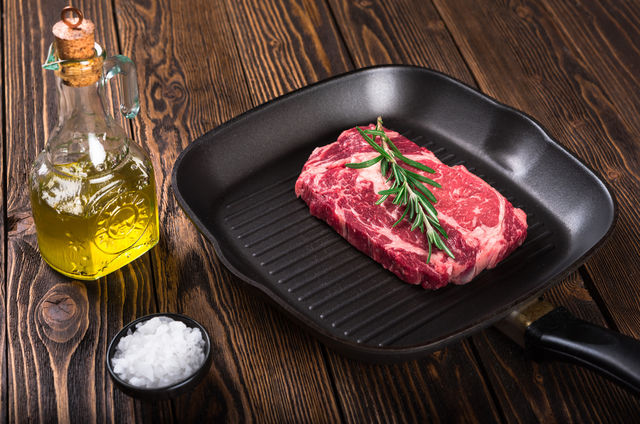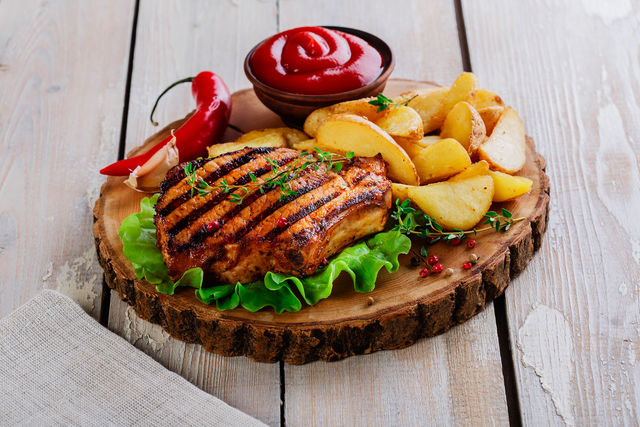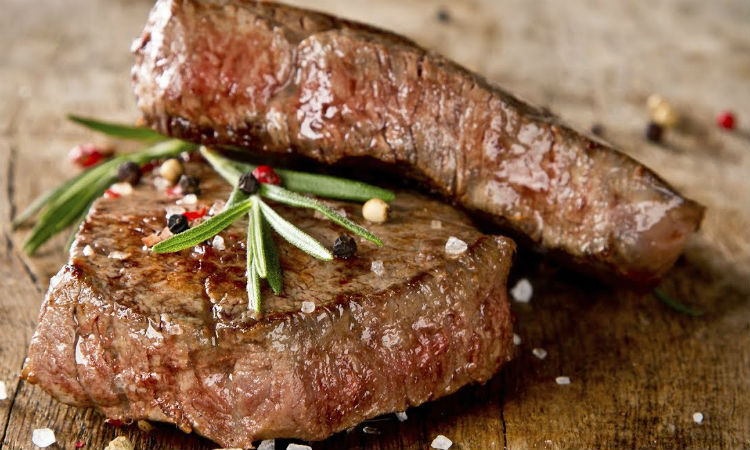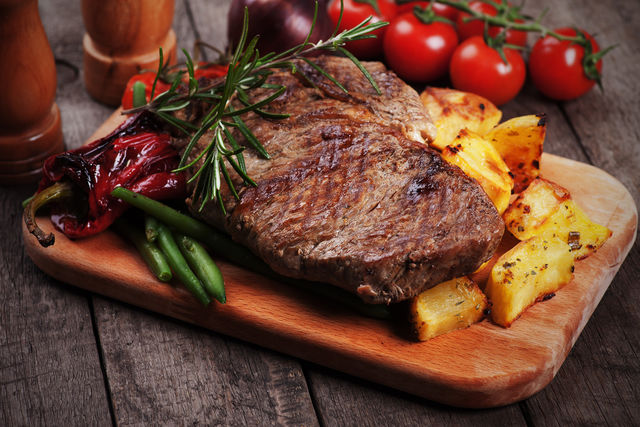Someone thinks that a steak is too expensive, and a simple stew is more economical, someone thinks that a good steak cannot be cooked at home. But in reality, meat lovers will pay much more for a restaurant steak than for a homemade one. Although they could easily cook the same in their own kitchen.
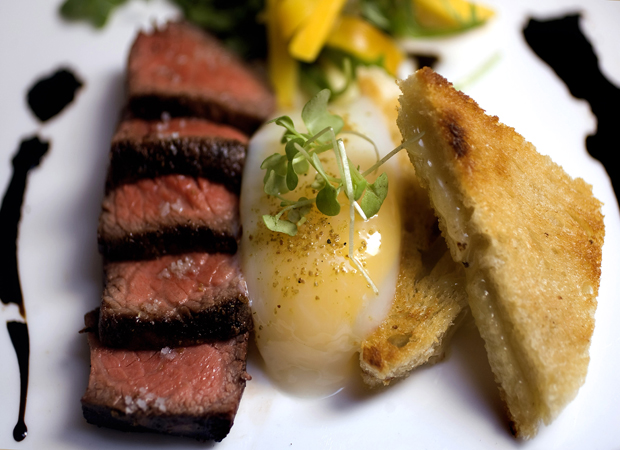
- Which meat to choose from? Of course, only high-quality, fresh chilled meat should be chosen for the steak. And certainly beef. We cook steak at home, that is, in a pan. For these purposes, ribeye is suitable, it has a large amount of thin fat layers, so it will turn out better in a pan than all other steaks.
- Preparation. It is best to fry warm meat, at room temperature. This is easy to arrange if you are not in a hurry – 2 hours before cooking, remove the meat from the refrigerator, close it with something so that it does not get weather – the path heats up. But if you come home from work and you need to fry the meat now? Then it can be wrapped in cling film, but only tightly enough and in several layers. And put in warm (about 50 ° C) water. For half an hour. The meat will heat up while you wash your hands and ask the children if they have done their homework. Second point. Do not cook moist meat. Dry it with a paper towel before cooking. Otherwise, the meat may develop an unpleasant odor.
- Thickness. It all depends on personal taste and the degree of roast that you prefer. If you like lightly roasted meat, then you can cut the steaks about 4 cm thick. If the roasting is supposed to be more serious, then you can make the steaks thinner, about 3 cm thick. But it must be borne in mind that you did not get thinly sliced meat will not be juicy, so less than 2.5 cm thick is no longer a steak.
- Salt and spices. It is often not recommended to salt the meat until the end of its cooking. Because of salt, the meat loses its juiciness. But this point of view also has a downside. After the meat has been fried, you cannot salt it so that the seasonings are evenly distributed over the piece. And that’s a big loss for the steak. Therefore, it is best to rub the meat with salt and spices and leave to lie down for 5-7 minutes. This will help the seasoning spread evenly. And the meat, by the way, will be fried more evenly. For meat, sea salt and freshly ground black pepper are ideal. Perhaps nothing else is required.
- Fat for frying. Steaks are usually fried in a dry skillet. But you can grease a piece of meat with a drop of odorless oil before frying. This will give it a shine, help in crust formation, and prevent the meat from drying out. The second option: drip a little olive (refined) oil and a few drops of lemon juice on the meat. The aroma will be extraordinary.
- Scent. The oil can give the meat a great flavor. For example, you can add it in the middle of frying, when a firm crust has formed on the meat. A slice of butter mixed with minced garlic will make the steak simply unforgettable. Attention: after you put the oil in the pan, you do not need to fry for a long time so that the oil and garlic do not start burning.
- Temperature. First, we heat the frying pan on the fire. Very much. If you carry your hand over it at a distance of 15 cm, then strong heat should be felt. With such a strong heat, the meat will immediately grab a crust and may even char a little. Just a little bit, just to give off a nice roasted flavor. After the steak is in the skillet and you have formed a crust, you can lower the temperature. Medium fire will be just right.
- Be sure to turn over. The more often you turn the meat, the juicier it becomes. That is, you cannot fry the meat on one side, then on the other and it will calm down. First, you need to form a crust. To do this, fry the meat for a minute over high heat, pressing the meat to the pan with a spatula. Then you can reduce the heat a little and fry the meat for 6-8 minutes, turning it over every minute. If you want a steak with blood, almost soggy inside, then turn it over even more often. That is, first form a crust, and then twirl the steak in a pan every half a minute. It will turn out juicy and hardly fried. The frying time should be shortened slightly. But remember that it depends on the thickness of the meat too.
- Finally, when the steak is fried, let it rest for 5 minutes. And only then garnish with mustard, vegetables, or something else.

